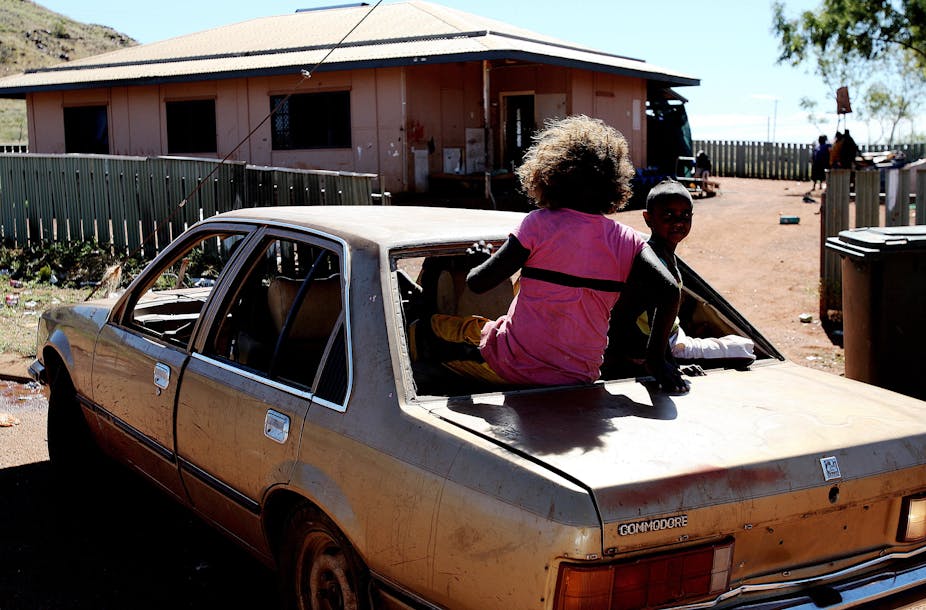The latest Australian Institute of Health and Welfare report – Headline Indicators for Children’s Health, Development and Wellbeing 2011 – shows Indigenous children, as well as those living in remote areas, are faring considerably worse than their counterparts in cities.
Professor Helen Milroy, provides some analysis of the report’s conclusions about Australia’s Aboriginal and Torres Strait Islander population.
One of the more striking things about the report’s findings is that we don’t seem to have progressed very far.
There was considerable change in infant mortality quite some years ago when we saw a dramatic decline but this seems to have flat-lined now.
So, the infant mortality in the Aboriginal and Torres Strait Islander population is still at a rate that’s completely unacceptable in a developed country such as Australia.
This is despite the enormous amount of emphasis on healthy birth weights and children as the starting point to a healthy life and to close the gap on life expectancy.
Now, if we’re not achieving that, then we’re never going to get to the other end of the spectrum, which is a reduction in chronic disease and other negative life outcomes.
We have to question what we’re doing and how well we’re doing it if we’re not seeing any changes in these basic levels of reporting.
False uniformity
The assumption of pan-indigeneity in statistics like these is a real problem: we know some Aboriginal communities are doing well, so for some families and smaller cohorts, infant mortality would be much lower than what’s reported here.
But in other communities, infant mortality is actually extremely high and this is the issue with having statistics at the national or even at the state level – they don’t indicate what’s happening at the local level in adequate detail.
Disadvantaged communities are going to require a re-examination of how programs are developed and delivered.
Substantiation of child abuse and high infant mortality often link to other social ills such as youth suicide and other indicators of disadvantage.
But what we tend to have is a blanket approach and such approaches don’t work for populations that are so diverse and where the risk factors are often contextual or regional.
Barriers to improvement
For some communities, racism, access to services and alcohol or drug abuse remain barriers to better outcomes. In others, the major issues are geographical isolation, poor nutrition and overcrowding.
One of the consequences of geographical isolation is lack of access to health care because Australia has some of the most remote communities in the world.
Other communities have negative health and life outcomes because of alcohol, violence and child abuse.
So we need to differentiate between social determinant factors such as lack to health-care access and those leading to even more negative outcomes.

High teen birthrate
The teen birth rate has always been high in the Aboriginal population. It’s noted again in the report and it’s not necessarily a negative thing. The outcome for the mother and child are what’s significant.
If we look at traditional Aboriginal society, women may have had babies at quite a young age but mothers and infants were cared for within an extensive kinship structure.
This structure was very supportive and provided a safe attachment system so infants had good outcomes. But when you have a fragmented kinship system where a family is separated and there’s a breakdown of family structures, then there’s potential for a negative impact on young mothers.
We have to consider what the impact of the historical legacy is on family structures, risk factors and how communities work in order to understand the complexity of what happens in teenage pregnancy.
So again, there’s a need for an approach that’s sensitive to the particular community and looks at its level of function and cohesion.
By not addressing infant mortality, child abuse and the resulting trauma, we’re condemning Aboriginal and Torres Strait Islander children to lifelong disadvantage, negative life outcomes and early death.
And that’s not good enough. We have technology, we have knowledge, we have capacity, so why aren’t we achieving better outcomes?
Setting an example
Indigenous culture is very resilient despite Aboriginal and Torres Strait Islander people being the most disadvantaged in our society.
Some of the ways we deliver programs to this population group are extremely good and innovative – they are world class. But if we adopt a much more culturally-enriched framework, we can get better outcomes.
And not only would we get better outcomes for Aboriginal people, we could get better outcomes for everybody because we can learn from positive experiences of our Indigenous population.

